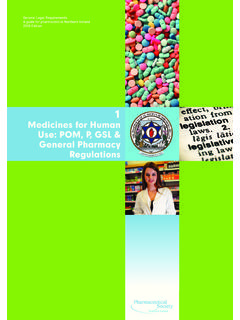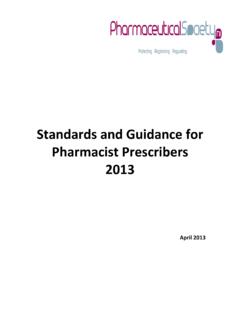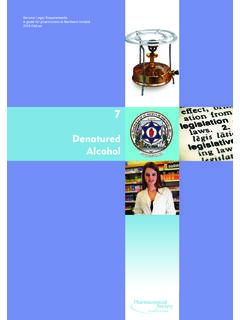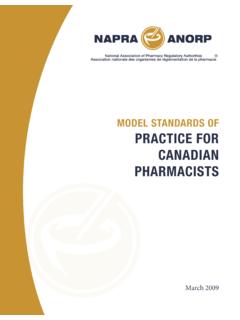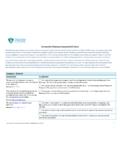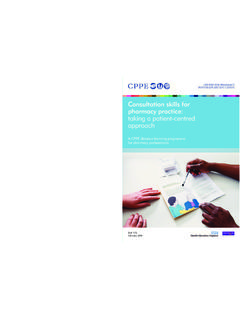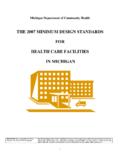Transcription of PROFESSIONAL STANDARDS AND GUIDANCE FOR …
1 PROFESSIONALSTANDARDS ANDGUIDANCE FOR THESALE AND SUPPLYOF MEDICINES Issue: June 20092 PROFESSIONAL STANDARDSAND GUIDANCE FOR THE SALEAND supply OF MEDICINES CONTENTSS tatus of this document About this document1 Pharmaceutical stock 2 supply of over the counter (OTC) medicines 3 supply of prescribed medicines 4 Extemporaneous preparation or compounding 5 Repeat Medication Services 6 Delivery services 7 Prescription Collection Service 8 Complementary Therapies and Medicines 9 Emergencies 10 Patient Group Directions (PGDs) GUIDANCE that supports this document Acknowledgement 3 STATUS OF THIS DOCUMENTThis GUIDANCE is addressed to pharmacists but may also help patients and thepublic understand what they can expect when medicines are either purchasedover the counter or supplied on prescription.
2 Principle of the Code of Ethics states that the pharmacist must comply withlegal requirements, mandatory PROFESSIONAL STANDARDS and accepted bestpractice GUIDANCE . This document contains: mandatory PROFESSIONAL STANDARDS (indicated by the word must and haveto ) for all registered pharmacists; and GUIDANCE on good practice (indicated by the word should , might , may , would , will and could ) which the pharmacist should follow in all normal circumstances. Serious or persistent failure to follow this GUIDANCE will put a pharmacist sregistration at risk.
3 The pharmacist1must, therefore, be prepared to explainand justify his actions. If a complaint is made against a pharmacist, the Pharmaceutical Society ofNorthern Ireland s (hereinafter named the Society) Fitness to Practise processwill take account of the requirements of the Code of Ethics and underpinningdocuments, including this one. The pharmacist will be expected to justify anydecision to act outside the terms set down in these documents. ABOUT THIS DOCUMENT The Code of Ethics sets out eight principles of ethical practice that apharmacist must follow.
4 It provides a framework for PROFESSIONAL decision-making and it is the pharmacist s responsibility to apply the principles to dailywork situations, using his PROFESSIONAL judgement. The GUIDANCE is not meantto be exhaustive, nor can it be. Principle 1 of the Code of Ethics states that the pharmacist must Make thesafety and welfare of patients your prime concern . 1 Pharmacist appears with masculine pronoun and is understood to refer to male/female gender 4In adhering to this principle, the pharmacist is expected to: ensure the provision of a high standard of PROFESSIONAL service by him or those working under his direct supervision; provide appropriate treatment and care based on relevant information he has available to him.
5 Where appropriate, consult with other agencies and signpost or refer patients to other health and social care professionals and/or relevant organisations; ensure as far as possible the clinical appropriateness of medicines supplied to patients and their safe and timely access to them; promote the safe, effective and rational use of medicines by controlling the sale or supply of all medicinal and related products, especially those with a potential for abuse or dependency; purchase medicines only from suppliers and sources known to be reputable to ensure the safety, quality and efficacy of products supplied topatients; ensure he has the facilities, equipment and materials necessary to provide services to professionally acceptable STANDARDS ; and ensure he records patient consent either in writing or electronically before providing a PROFESSIONAL service.
6 This document expands on the principles of the Code of Ethics to set out thepharmacist s PROFESSIONAL responsibilities if he is involved in the sale andsupply of medicines. It is designed to meet Society s obligations under relevantlegislation. This document does not detail legislative requirements, but when selling orsupplying medicines the pharmacist must comply with relevant legislative andcontractual requirements, including Health Service terms of service whereappropriate. 1 PHARMACEUTICAL STOCK STANDARDS Patients, members of the public and other healthcare professionals areentitled to expect that medicines sold or supplied within the course ofprofessional pharmacy practice are obtained from a reputable source, thatappropriate distribution processes are followed and that the medicines are fitfor the intended purpose.
7 5 The pharmacist must ensure that: he suspects he has been offered or supplied a counterfeit or defective medicine , this is reported to the Medicines and Healthcare products Regulatory Agency (MHRA), the Department of Health Social Services andPublic Safety (DHSSPS) Inspectorate, the Pharmaceutical Society of Northern Ireland (PSNI), the Veterinary Medicines Directorate (VMD) or the marketing authorisation holder as appropriate to the individual situation. Any such stock must be segregated from other pharmacy stock and must not be sold or supplied for the treatment of any person(s) or animal(s); stock is stored under suitable conditions, taking into consideration the stability of the drug and any manufacturers recommendations; attention is paid to protection of pharmaceutical stock from contamination, sunlight, atmospheric moisture and adverse temperatures.
8 Cases of concern about the stability of a medicine , it must be segregated from the rest of the pharmacy stock and not sold or supplied for patient or animal use; used for pharmaceutical stock must be capable of storing products between 2 C and 8 C, thereby ensuring the maintenance of the cold chain and integrity of fridge lines supplied. They must be equipped with a maximum/minimum thermometer, or other suitable alternative, which is checked on each day the pharmacy is open and the maximum and minimum temperature recorded.
9 Steps must be taken to rectify discrepancies and to appropriately dispose any pharmaceutical stock that has been subjected to temperatures outside the terms of SPC recommendations; labelling of all stocks of medicines in the pharmacy with batch and expiry details; removal of medicines from blister or foil packs only, where required, at the time of dispensing, to assist an individual patient. In so doing, the integrity of the medicine must not be impaired; segregation of date-expired stock from the rest of the pharmacy stockand its appropriate disposal; installation of procedures to reduce the risk of short dated or out-of-date stock being accidentally supplied to a patient or member of the public.
10 Ban on the sale or supply of products, from registered pharmacy premises, that may be injurious to a person s health, for example, tobaccoproducts, alcoholic beverages and products intended to mask the signs of alcohol or drug consumption; segregation and appropriate disposal of medicines returned to the pharmacy from a patient s home, a care home or a similar institution; these medicines must not be supplied to another patient. the hospital setting, all medicines returned to the pharmacy department from a ward or other hospital department are examined under the direction of a pharmacist to assess their suitability for being returned to stock.

